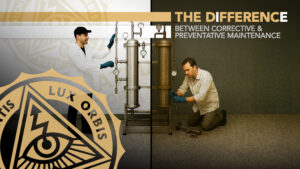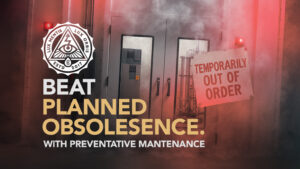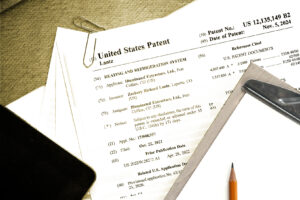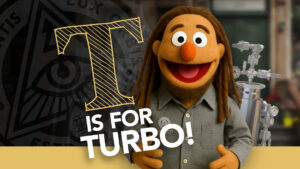1. Incorrect Facility Design
The first step in the journey toward a successful botanical extraction starts with the design of your facility. There are a number of different types of extraction methods, each requiring a unique set of equipment, solvents, and safety protocols. For example, a hydrocarbon extraction has a host of different requirements than an ethanol or CO2 extraction.
One such design consideration is the use of specific manufacturing spaces known as Class 1 Division 1 (C1D1) and Class 1 Division 2 (C1D2) rooms. These enclosed structures protect products and workers from various hazards within the facility. C1D1 rooms are equipped with fire-suppression materials and ventilation systems that can handle flammable gasses like hydrocarbons. And C1D2 rooms confine those gasses within closed containers, releasing them safely in instances of a system failure or accidental rupture.
All extraction facilities using propane, butane, or isobutane solvents must employ a C1D1 compliant room. On the other hand, ethanol extractions require a C1D2 manufacturing space. In order to keep costs down—and protect everyone in the lab—it’s crucial that you understand which type of safety room you need before designing your facility.
2. Not Purchasing the Correct Equipment for Your Product or Lab
Choosing proper equipment is essential to operating a successful extraction lab. But it’s about more than picking out high-priced machinery; you must make sure your lab equipment is certified for safety, efficiency, and sustainability. Third-party certifications, testing, and inspections will ensure your extraction equipment meets strict standards that are designed to protect lab personnel as well as consumers.
One such safety standard is UL certification. Underwriter Laboratories (UL), one of the longest-running safety certification companies in the world, certifies products, facilities, processes, and systems based on industry-wide standards. UL issues more than 20 different UL certifications across a wide array of categories.
A UL certification shows that your extraction equipment has been tested by a third-party, verifying UL safety standards. In the botanical industry, UL conducts third-party certifications for both cultivation and extraction facilities, legitimizing these entities in the eyes of consumers. Without the all-important UL seal, you cannot guarantee the safety of your equipment or products, and this could be a deciding factor for certain consumers as they browse store shelves.
3. Not Properly Maintaining Equipment
What’s the point of having all of that bright and shiny heavy-duty extraction equipment if you’re not going to properly maintain it? Regular cleaning and maintenance of botanical extraction machinery not only protects your employees, it also ensures optimal performance and maximum product yield.
Proper upkeep is crucial to maintaining a long-term foothold in the botanical extraction market. You need to know when to clean, how to clean, when to schedule maintenance, and when to replace certain parts. Here are some tips to properly maintain equipment:
- Know your extractor components: Familiarize yourself with your botanical extraction equipment so you know what type of care it needs in order to work efficiently.
- Understand how and when to clean: Common procedures include running an extraction without any product in the system and checking downstream filters for any debris. Refer to your user manual for specific instructions, but be sure to monitor the equipment and set a cleaning schedule.
- Keep a maintenance log: Logbooks help you track maintenance efforts for each individual extraction system. With a logbook, you can keep track of noise levels and vibration changes, both of which can signal an issue in the system.
- Maintain a supply of extra parts: Certain parts of an extraction system can become worn out over time. Whether it’s belts, valves, o-rings, or consumables such as oil, coolant, and filters, a busy extraction system will require replacements on the fly.
When you can quickly repair a component or cross reference a past maintenance scenario, you minimize downtime and keep the extraction equipment churning.
4. Not Keeping Standard Operating Procedures (SOPs)
Standard operating procedures (SOPs) are crucial to the success of any manufacturing laboratory-based endeavor. These time-honored checkpoints usually include safety measures and operational guidance, along with standards that help you maintain a consistent process with predictable results.
In botanical extraction, SOPs are essential in keeping your operation compliant with Good Manufacturing Practices (GMP), which are quickly becoming the standard as the industry continues its upward trajectory. SOPs document common safety hazards and emergency procedures, but they also describe cleaning and maintenance best practices to keep the production efficient and consistent.
A seasoned Quality Control Manager can be relied upon as a specialist in the art of monitoring the facility and maintaining the SOP status quo.
5. Not Documenting Extraction Processes
In so many ways, documentation is your best friend when you dive into botanical extraction. As with any business, a clear and concise historical document can protect your interests and assets. Botanical extraction facility documentation can include step-by-step instructions for your specific extraction process as well as vital safety statistics, inventory, and maintenance and personnel schedules.
Internal and external documentation furthers your efforts to meet regulatory compliance standards, specifically when it comes to GMP certification. It’s all in service of keeping your operation in business for the long haul.
6. Not Following GMP & GLP Regulations
As you can tell, there are plenty of acronyms to keep up on in botanical extraction. The next two are similar in terminology and application. One is Good Manufacturing Practices (GMP)—which we already touched on in this article—and the other is Good Laboratory Practices (GLP).
GMP and GLP are both overseen by the Food and Drug Administration (FDA) and are meant to regulate industry while also protecting the public. If you don’t strictly adhere to GMP and GLP in your lab, you open up your company to a host of risk factors, including:
- Higher operating costs
- Decreased consumer confidence
- Questionable production safety
- Loss of competitive advantage
- Insufficient documentation
- Increased time to market
For these reasons, it’s imperative that your extraction facility get started in obtaining your GMP and GLP certifications.
7. Not Working with Expert Botanical Extractors
Even if you are the most savvy business person on the planet with enough degrees to cover an entire wall of your office, you will still have plenty to learn about botanical extraction. Do you know the optimal time to begin processing raw plant material in order to maximize cannabinoid content and trichome count? What about which solvent to use in your closed-loop extraction system? Do you know what closed-loop means? Even if you know the answers to those questions, it helps to have an extraction expert on hand to fill in any knowledge gaps you have regarding any step in the process.
What’s more, in order for your extraction business to run like a fine-tuned machine and rake in revenue, you’ll definitely want to hire experienced talent. A staff that’s well-versed in the botanical industry can keep you in the loop when it comes to following extraction laws and regulations.
8. Using Non-Verified Biomass
Biomass is the plant material that’s been harvested for the purpose of extracting cannabinoids and terpenes. Your extracted end product will only be as good as this biomass.
There’s a good chance you did not cultivate your plants with your bare hands. As such, the only way to ensure it’s free of impurities and has been tested for contaminants, mold, and pests is to source quality biomass from reputable cultivators. Skipping this step is one of the biggest mistakes you can make in the botanical industry. Once you put a subpar product out into the world and consumers get wind of it, your reputation can take a massive hit.
To verify the quality of your biomass, closely inspect the raw plant material when it arrives in your facility, visit your cultivator to see their operation firsthand, perform a small-scale test extraction before the main run, and review third-party test results on the biomass.
9. Not Working with a Third-Party Testing Laboratory
Third-party testing isn’t only for cultivated plant material. Post-extraction products should also go through rigorous third-party testing before it reaches consumers. Working with a third-party testing laboratory protects you from a legal standpoint and safeguards your reputation, ensuring your facility is safe and fully compliant with regulatory standards.
If you forego third-party testing (which we do not recommend), you run the risk of fines, harsh penalties, and even losing your business entirely. Don’t run that risk! Partner with a testing lab to guarantee legal compliance and gain consumer confidence.
Aside from legalities, working with a third-party testing laboratory can also give you insight into:
- The overall potency of your product
- The percentages of common cannabinoids, and other compounds
- The types of terpenes in your extract
- Whether or not any residual solvents remain in the extract
- If there are any microbials, pesticides, or heavy metals present
Obtaining a certificate of analysis (COA) from a verified third-party testing laboratory is non-negotiable for any extraction facility looking for long-term success.
10. Not Keeping Up With New Regulations
As previously mentioned in this article, legalization routinely fluctuates on both the federal and state levels. As such, regulations are constantly being updated, with new standards and laws cropping up across the industry, including botanical extraction.
For example, botanical extraction facilities are required to operate under current good manufacturing processes (GMP) regulations, a relatively new development in the industry. And in another sign that the plant is firmly planted in the mainstream, extraction laboratories must also be in full compliance with Occupational Safety and Health Administration (OSHA) regulations for workplace safety and health standards.
Overlooking these and other regulations can stop your botanical extraction operation dead in its tracks.







